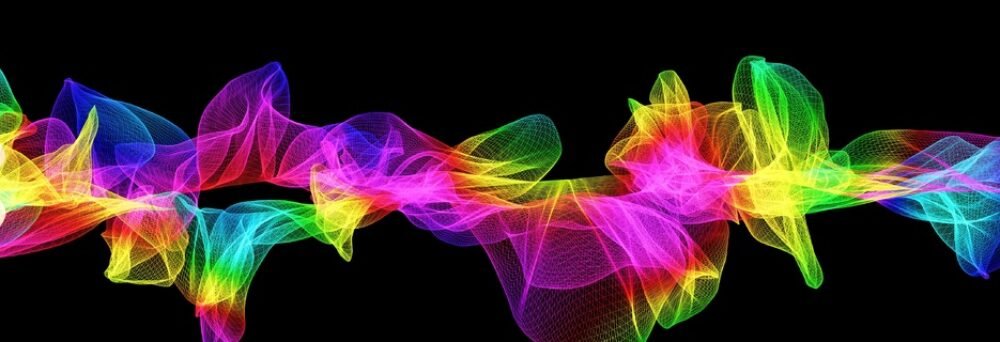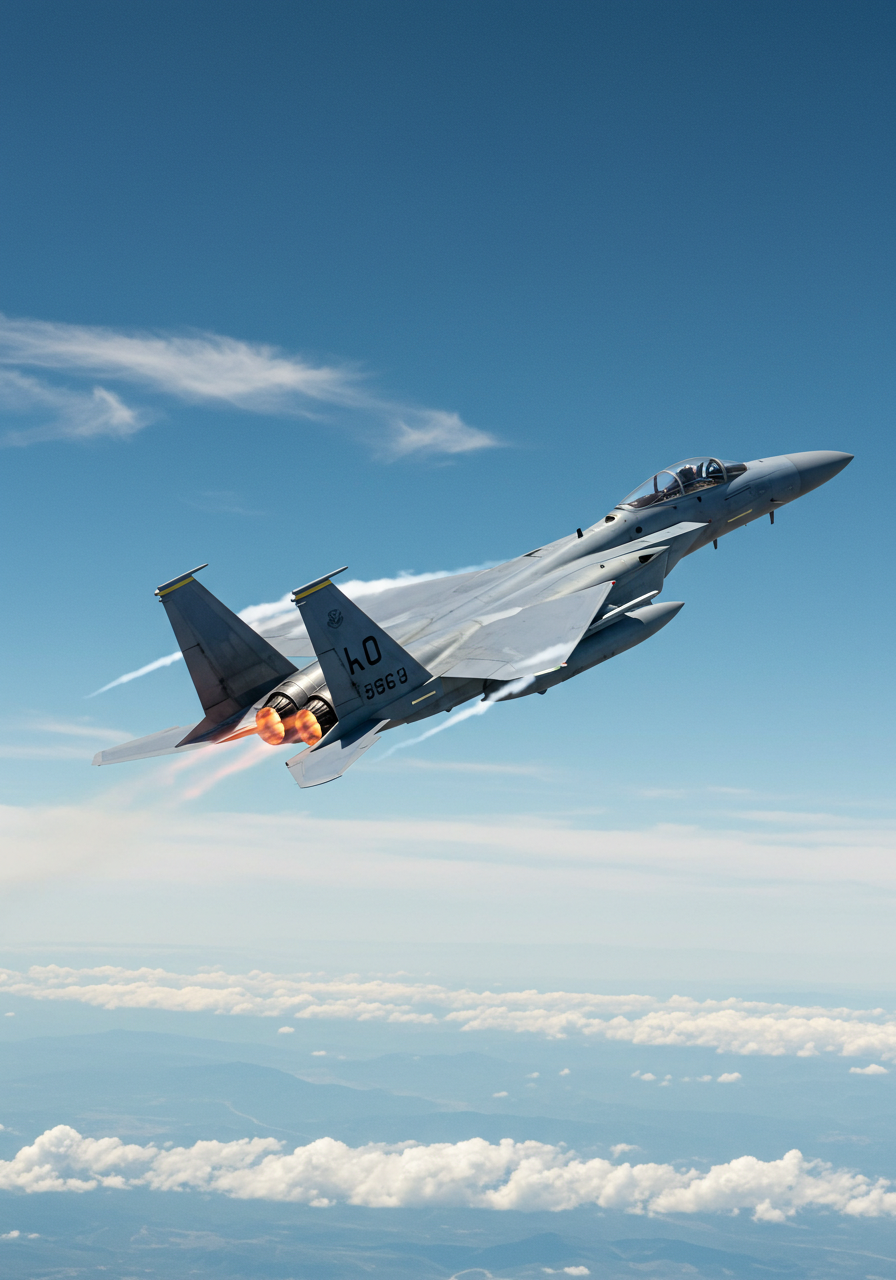Explore the future of aerial combat in June 2025 with our in-depth analysis of U.S. Air Force fighter aircraft and their advanced technologies.
As of June 20, 2025, the United States Air Force stands at a pivotal juncture in its evolution of air superiority. The landscape of aerial combat is rapidly shifting, driven by advancements in stealth, artificial intelligence, and networked warfare. This blog post will explore the current state of the USAF’s fighter fleet, highlight its flagship platforms, and cast an eye towards the groundbreaking developments shaping the future of air dominance.
F-15 Eagle (F-15C, F-15E Strike Eagle, F-15EX Eagle II)
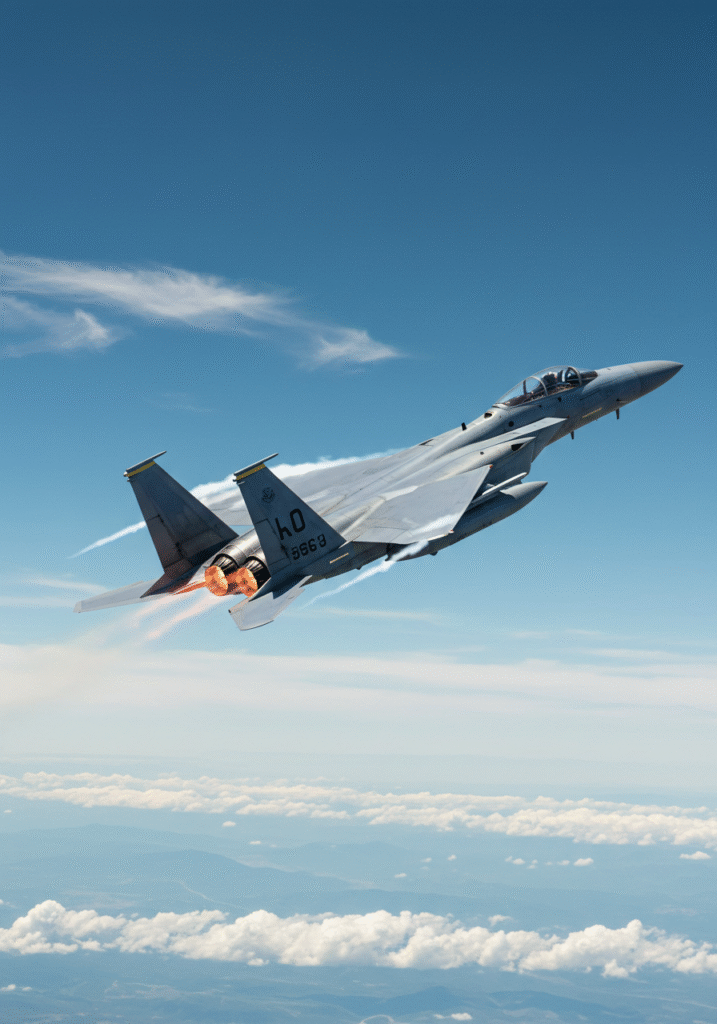
This is a dynamic, vertical-format photograph featuring a grey fighter jet, likely an F-15 Eagle given its distinctive twin tails and engine configuration, soaring through a clear blue sky.
The jet is angled upwards and to the right, with its underside partially visible. Both of its powerful engines are actively firing, indicated by bright orange and yellow afterburners creating prominent heat plumes and exhaust trails. Wispy white contrails are also streaming from the wings.
The tail fins display markings: “HO” is clearly visible on the left tail, and below it, the number “5669” is partially visible.
Below the aircraft, a vast expanse of white, fluffy clouds forms a soft, undulating carpet, suggesting a high-altitude flight. The lighting indicates daylight, with the sun likely illuminating the jet from the upper left, highlighting its metallic surface.
F-16 Fighting Falcon (F-16C) fighter jet
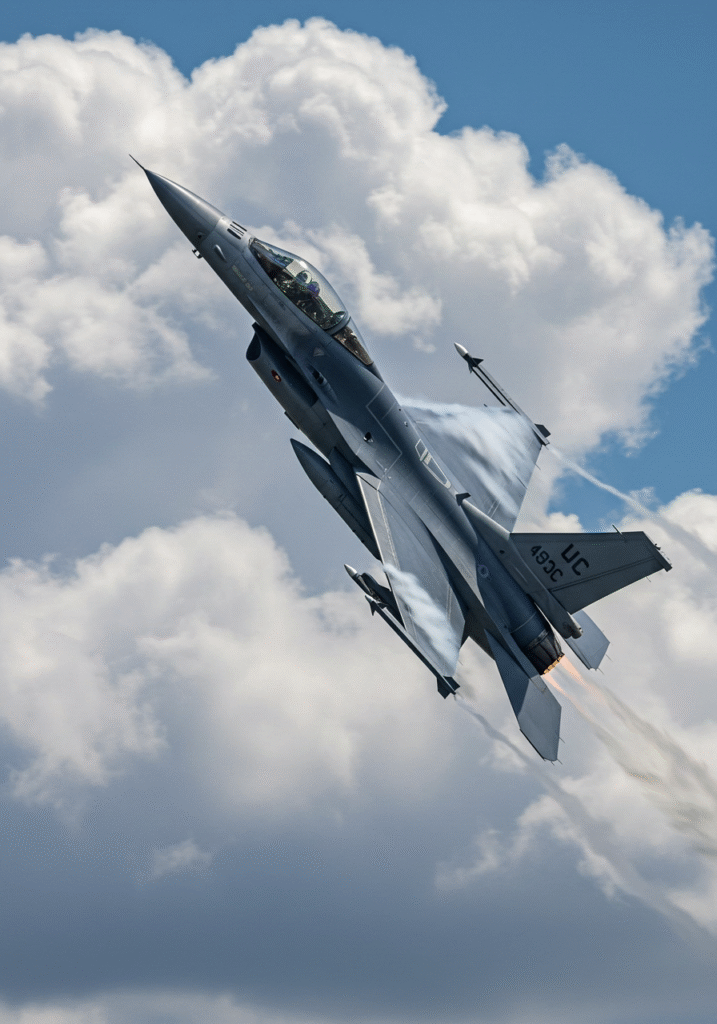
This is a striking, dynamic, vertical-format photograph of a grey fighter jet, which appears to be an F-16 Fighting Falcon due to its single engine, distinctive intake, and wing shape.
The jet is captured in a steep climb or turn, with its belly facing towards the viewer and its nose pointed upwards and slightly to the right. The single engine at the rear is emitting a bright, fiery orange exhaust from its afterburner, indicating full thrust.
A prominent trail of white condensation or vapor is streaming off the top surface of the fuselage, likely due to high G-forces or humid air conditions. Smaller wisps of vapor are also visible near the wingtips.
The aircraft is set against a backdrop of a partially cloudy blue sky. Fluffy, bright white cumulus clouds are scattered around the jet, some appearing behind it and some seemingly at a lower altitude, creating depth in the image.
The overall impression is one of power, speed, and agility, showcasing the fighter jet in action.
F-22 Raptor fighter jet
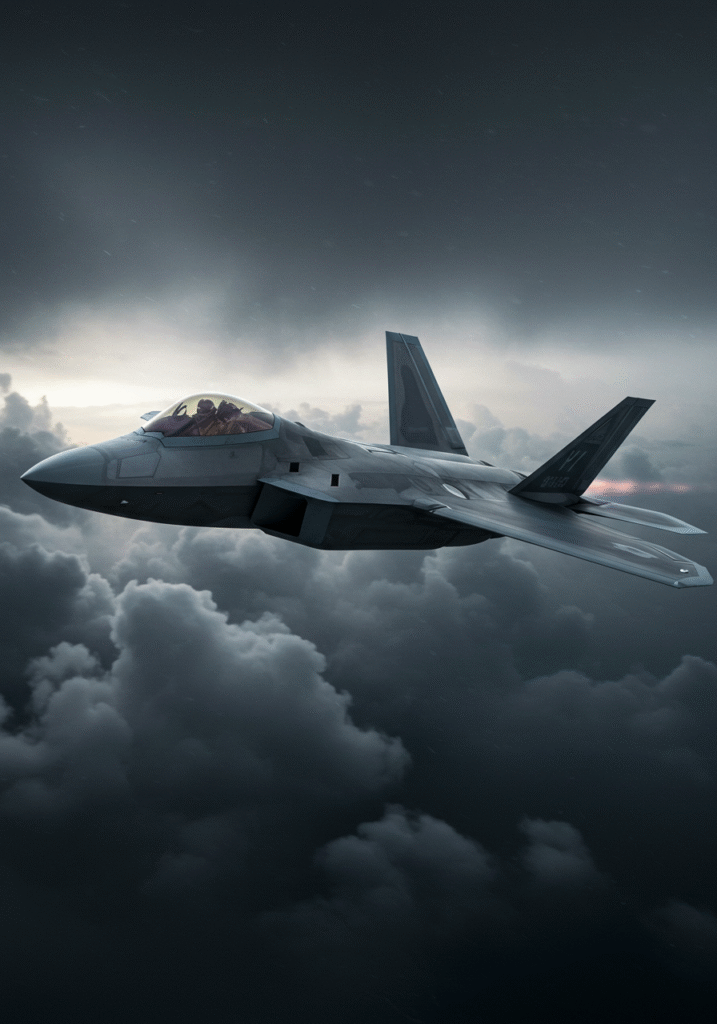
This is a dramatic and moody vertical photograph of a stealth fighter jet, specifically an F-22 Raptor, identifiable by its distinctive angular design, diamond-shaped wings, and canted twin vertical stabilizers.
The aircraft is dark grey and appears to be flying from left to right, angled slightly toward the viewer. It is captured in what looks like level flight, slicing through a turbulent and ominous sky.
The environment is the most striking feature of this image. Instead of a clear blue sky, the jet is surrounded by thick, dark, and voluminous storm clouds. A break in the clouds on the horizon emits a soft, diffused light, suggesting either sunrise or sunset, or light piercing through a dense storm. This backlighting creates a powerful silhouette effect, highlighting the top edges of the aircraft and the contours of the clouds.
The cockpit canopy has a noticeable orange or golden tint, and the silhouette of the pilot can be seen inside. Unlike the previous images, there are no visible afterburners or contrails, adding to the sense of stealthy, silent power as the jet navigates the challenging weather.
The overall mood is one of tension, power, and quiet intensity, portraying the advanced aircraft as a predator moving through a hostile, yet beautiful, environment.
F-35 Lightning II (F-35A) fighter jet
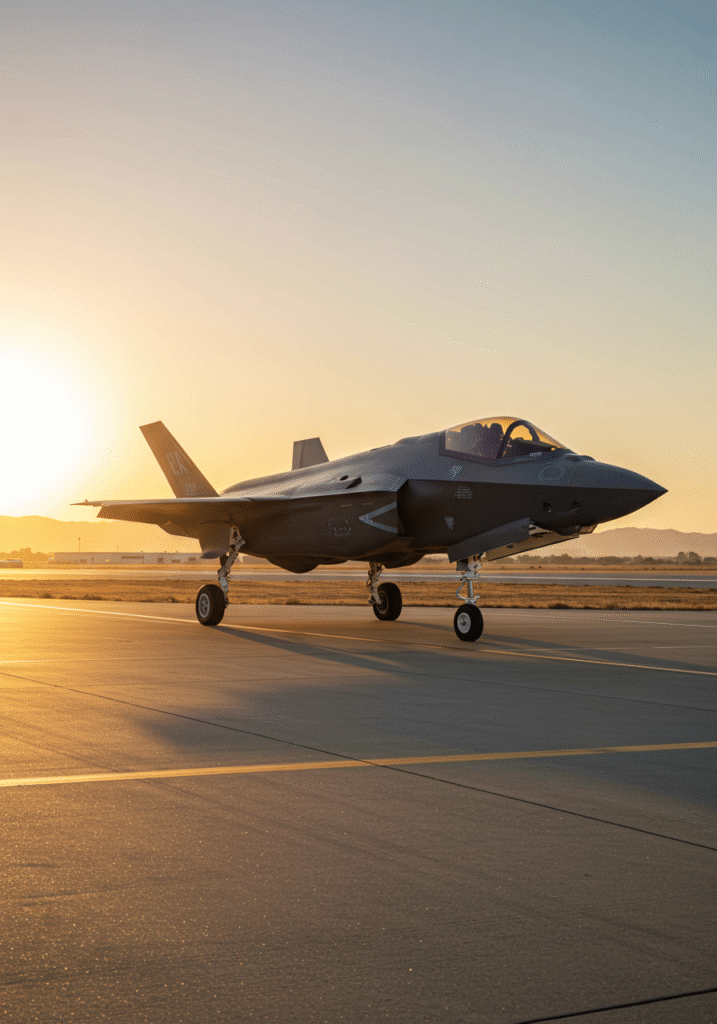
- Query successful
This is a striking vertical-format photograph of a modern, dark grey stealth fighter jet, specifically an F-35 Lightning II, parked on an airfield during what appears to be either sunrise or sunset.
The jet is positioned slightly to the right of the frame, facing towards the left. Its sleek, angular design, single engine, and distinctive stealth features are clearly visible. The landing gear is down, with all three wheels on the tarmac. The cockpit canopy has a golden or amber tint, reflecting the warm light.
The lighting is a key element of the image, with a large, bright sun glowing intensely on the left side of the frame, near the horizon. This creates long, dramatic shadows stretching from the aircraft across the tarmac towards the right, and bathes the entire scene in a warm, golden-orange light. The tarmac itself is dark, with visible lines and textures, reflecting some of the sunlight.
In the background, beyond the airfield, a range of mountains or hills can be seen silhouetted against the bright sky, further emphasizing the horizon line where the sun is positioned. The sky transitions from a brilliant light orange near the sun to a softer blue higher up.
The overall impression is one of quiet power and readiness, bathed in the beautiful, ethereal light of dawn or dusk.
